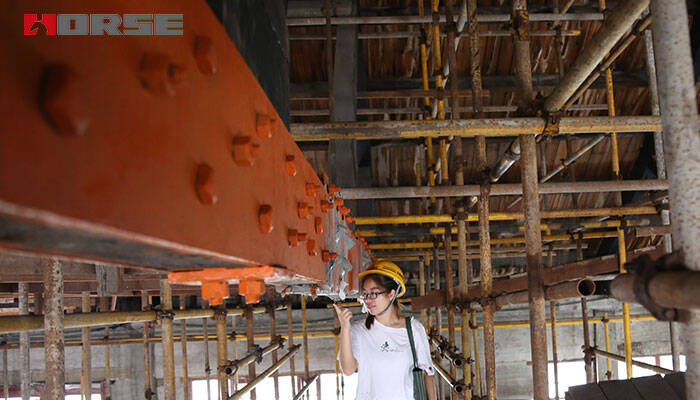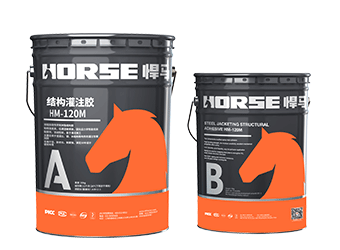Solutions
Horse Construction offers full range of structural strengthening materials with technical supports, documentation supports, products supports, project supports.
Bonded steel reinforcement is a mainstream reinforcement technology, and the reinforcement effect is very reliable. Among them, the arrangement of anchor bolts is the obvious feature of bonded steel reinforcement, so can anchor bolts bear force? What is its function?

Bonded steel reinforcement is a mainstream reinforcement technology, and the reinforcement effect is very reliable. Among them, the arrangement of anchor bolts is the obvious feature of bonded steel reinforcement, so can anchor bolts bear force? What is its function?
I. The Role of Anchor Bolts
Steel bonding reinforcement, using steel glue to bond steel plate to reinforcement components, needs to undergo the process of solidification, and before solidification, if the steel plate is fixed on the base material, it must be achieved by external force.
Secondly, in order to improve the reinforcement effect, it is necessary to control the thickness of viscose steel by extrusion.
The arrangement of chemical anchor bolts can fix the steel plate and control the thickness of viscose steel at the same time. It should be noted that after the reinforcement, the anchor bolt can not bear the force together with the steel plate.
On the other hand, during the solidification of viscose steel, anchor bolts can also resist the effect of building dynamic load.

2. The influence of excessive bolts
For the reinforcement of the concrete base material - the construction of anchor bolts, it is necessary to drill holes on them, which will inevitably cause damage to the integrity of concrete.
For concrete beams strengthened with bonded steel, when the number of anchor bolts is too large, with the increasing load, the concentrated part of anchor bolts will face the risk of concrete splitting damage, and become the weakness of reinforcement.
The influence on the steel plate used for reinforcement - too many anchor bolts, also means that the steel plate used for reinforcement has more openings.
The section area of steel plate strengthened by bonding steel is directly related to the effect of bonding steel. The large section area represents that steel plate can provide higher bearing capacity for structure. Too much steel plate operation will weaken the section of steel plate and reduce the effect of bonded steel reinforcement. When the steel plate opens, the stress concentration will occur at the openings, which eventually leads to smaller sections bearing greater stress and reducing the overall reinforcement effect.
3. Reasonable arrangement of anchor bolts
Since the arrangement of anchor bolts is too much and harmful, how to arrange anchor bolts is the most appropriate? In the code, there are the following requirements for the spacing of anchor bolts: the diameter of anchor bolts of fixed steel plate should not be greater than M10, and the spacing and margin of anchor bolts should be no less than 60 mm and 250 mm, respectively. Anchor bolt compression method can be used for pressure fixing, and the distance between pressure points should not be greater than 500 mm. According to the above requirements, anchor bolts can be arranged flexibly according to the actual project conditions on the premise of meeting the requirements of the code.
Anchor bolts are not the more the better, but the right amount. So in order to ensure the reinforcement effect, we must work hard on steel plate and glue. The glue bonding force is strong enough and the parameters of steel plate are strong enough. Instead of working hard on anchor bolts, the quantity of anchor bolts is appropriate.
You can find anything here you are in need of, have a trust trying on these products, you will find the big difference after that.

High-strength anchor bolt with vinyl resin as main materials, composed of selected quartz sands, curing agents and glass tubes

Two-component epoxy modified epoxy structural strengthening adhesive for bonded steel plate to concrete

Modified epoxy resin structural perfusion adhesive, specifically for supporting adhesive bonded steel reinforcement